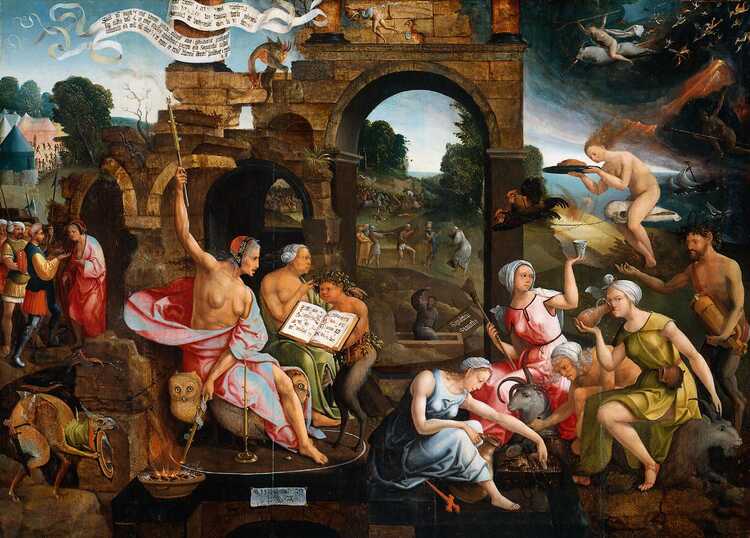Beside the macabre figures, the painting also illustrates various biblical texts relating to King Saul. Saul was at war with the Philistines and sought God’s help. When he received no answer, Saul decided to visit a woman in Endor who could conjure up spirits. She called up Saul’s onetime mentor: the prophet Samuel. Samuel’s spirit foretold that Saul would be defeated, because he had turned away from God. And so, after the battle was lost, Saul fell on his sword. All this is told in the painting.
Note that this biblical narrative is not the most prominent aspect of the painting: centre stage is occupied by a witch’s coven in the foreground. The hags appear with attributes such as incense, candles, owls, brooms and a book of magical formulas. All these were associated with witchcraft in Jacob’s day. The macabre figures roundabout also connect to sorcery and magic.
Jacob was trying to explain something to his mediaeval contemporaries. The message here is that witchcraft is the devil’s work. Those who turn away from God will be punished. At a time when the Catholic Church was fighting heresy, this message was an indirect warning to Protestants. Catholics believed that Protestants were abandoning the true religion, and would be punished. Just as happened to King Saul, when he became involved with witchcraft instead of trusting in God.
Would you like to find out more about this painting? Take a look here. You can view the work in detail at the Rijksmuseum site (https://www.rijksmuseum.nl/nl/collectie/SK-A-668).

